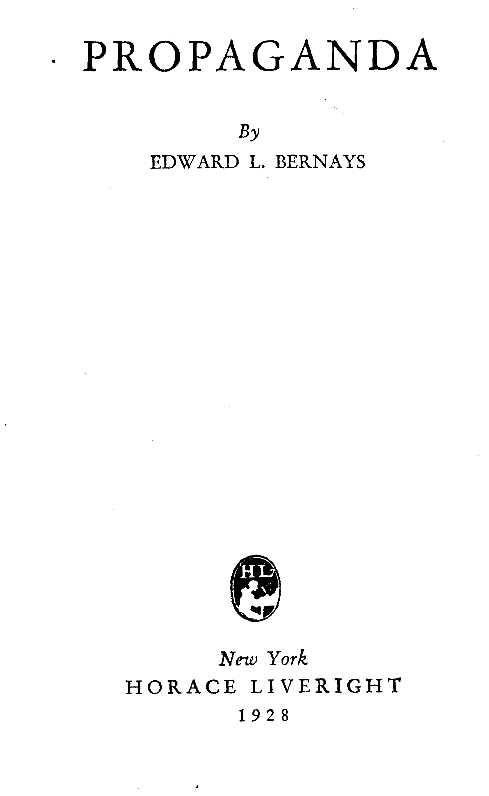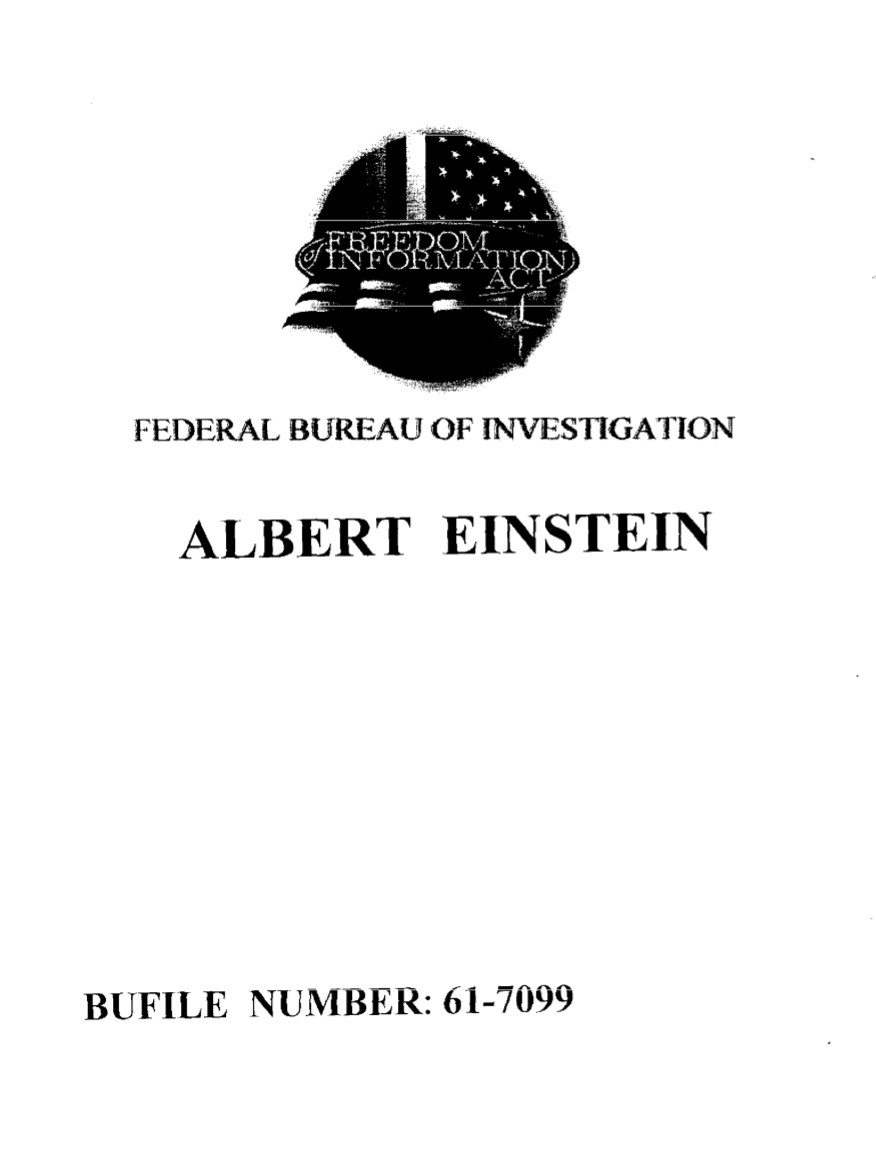Edward L. Bernays: Propaganda (1928)
Filed under book | Tags: · advertising, art, business, democracy, education, marketing, politics, propaganda, psychology, public relations, science

A seminal and controversial figure in the history of political thought and public relations, Edward Bernays (1891–1995), pioneered the scientific technique of shaping and manipulating public opinion, which he famously dubbed “engineering of consent.” During World War I, he was an integral part of the U.S. Committee on Public Information (CPI), a powerful propaganda apparatus that was mobilized to package, advertise and sell the war to the American people as one that would “Make the World Safe for Democracy.” The CPI would become the blueprint in which marketing strategies for future wars would be based upon.
Bernays applied the techniques he had learned in the CPI and, incorporating some of the ideas of Walter Lipmann, became an outspoken proponent of propaganda as a tool for democratic and corporate manipulation of the population. His 1928 bombshell Propaganda lays out his eerily prescient vision for using propaganda to regiment the collective mind in a variety of areas, including government, politics, art, science and education. To read this book today is to frightfully comprehend what our contemporary institutions of government and business have become in regards to organized manipulation of the masses.
Publisher Horace Liveright, New York, 1928
159 pages
The Century Of The Self: One: Happiness Machines (documentary film by Adam Curtis featuring Edward Bernays)
PDF (no OCR)
View online (HTML)
Paul N. Edwards: A Vast Machine: Computer Models, Climate Data, and the Politics of Global Warming (2010)
Filed under book | Tags: · climate, climate crisis, computing, data, global warming, meteorology, politics, science, weather

“Global warming skeptics often fall back on the argument that the scientific case for global warming is all model predictions, nothing but simulation; they warn us that we need to wait for real data, “sound science.” In A Vast Machine Paul Edwards has news for these doubters: without models, there are no data. Today, no collection of signals or observations–even from satellites, which can “see” the whole planet with a single instrument–becomes global in time and space without passing through a series of data models. Everything we know about the world’s climate we know through models. Edwards offers an engaging and innovative history of how scientists learned to understand the atmosphere–to measure it, trace its past, and model its future.
Edwards argues that all our knowledge about climate change comes from three kinds of computer models: simulation models of weather and climate; reanalysis models, which recreate climate history from historical weather data; and data models, used to combine and adjust measurements from many different sources. Meteorology creates knowledge through an infrastructure (weather stations and other data platforms) that covers the whole world, making global data. This infrastructure generates information so vast in quantity and so diverse in quality and form that it can be understood only by computer analysis–making data global. Edwards describes the science behind the scientific consensus on climate change, arguing that over the years data and models have converged to create a stable, reliable, and trustworthy basis for the reality of global warming.”
Publisher MIT Press, 2010
Infrastructures Series
ISBN 0262013924, 9780262013925
xxvii+518 pages
Reviews: Noel Castree (American Scientist, 2010), Ronald E. Doel (American Historical Review, 2011), Myles Allen (Nature, 2010), Richard C.J. Somerville (Science, 2011), Gabriele Gramelsberger (Minerva, 2012), McKenzie Wark (White Review, 2014).
PDF, PDF (updated on 2018-11-4)
Companion website (added on 2018-11-4)
FBI Files on Albert Einstein (1932-1955)
Filed under records | Tags: · history, history of science, invention, physics, politics, science, war

Released through the Freedom of Information Act.
Publisher Federal Bureau of Information, undated
FBI Records: The Vault series
1449 pages

